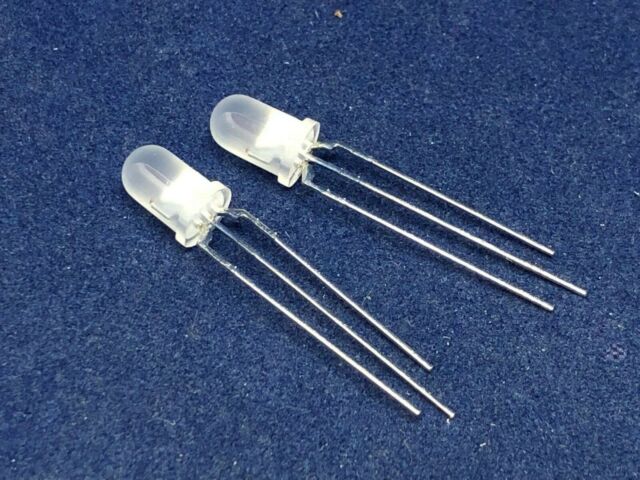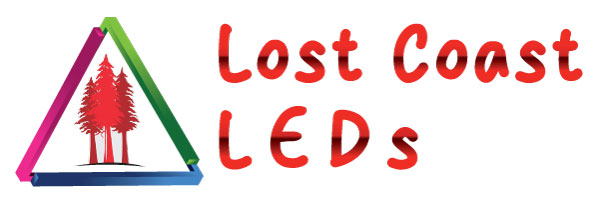Lost Coast LEDs’ diffused lights declared legal in California, yet CHP continues to pull people over. Learn how to protect yourself!
For those who are unaware, the officers of the California Highway Patrol have repeatedly initiated illegal traffic stops of individuals displaying LED light strips (underglow) on their vehicles. This behavior is unacceptable and will no longer be tolerated by Lost Coast LEDs.
Diffused vs. nondiffused. What’s the difference?
The California Vehicle Code separates lighting into two distinct sections, diffused and nondiffused lighting. So, what’s the difference, in layperson’s terms?
A non-diffused light, or direct light, is a light source that emits light in a concentrated, focused manner. This type of light creates sharp shadows and high contrast, as the light rays travel in a straight line without being scattered or softened by a diffuser. Examples of non-diffused light sources include:
- Bare Light Bulbs: Without any covering or shade, they produce direct, intense light.
- Spotlights: Designed to focus light on a specific area or object, creating well-defined shadows.
- Flashlights: Emit a narrow, focused beam of light for illuminating a specific target.
Non-diffused light is useful in situations where you need bright, direct illumination, but it can be harsh and create glare if not properly managed.
A diffused light is light that has been softened to reduce harsh shadows and glare, creating a more even and gentle illumination. This effect is achieved by scattering the light through a material, such as a diffuser. Here are some key characteristics of diffused light:
- Soft Shadows: The light spreads out more evenly, resulting in softer shadows.
- Even Illumination: The light is distributed uniformly across a surface or area.
- Reduced Glare: By scattering the light, it reduces the intensity and glare that can be harsh on the eyes.
Common materials used to diffuse light include frosted glass, fabric, and plastic covers. Diffused light is often used in photography, videography, and interior lighting to create a pleasing and natural look.
To put it simply, a light diffuser is a semi-transmittant piece of material placed in between a light source and a subject to diffuse the light as it passes through the material. This material does not solely block or cut light, but redirects light as it passes through for a diffused light spread on a subject.
LED light strips are, by definition, diffused lights. Why? Because the light displayed from the light strip is soft, not harsh, and scattered far and wide, as opposed to the light from a headlight, which is highly concentrated and focused. Furthermore, the LED bulbs themselves are coated with a diffusing material.

If you look at the LEDs above, you will see that they are literally coated with a diffusing material. Instead of coming out in a narrow, focused beam, the light is scattered by the epoxy coating at the tip of the bulb.
The pertinent sections…
Section 24500 of the California Vehicle Code states that “[a]ny vehicle may be equipped with a lamp or device on the exterior of the vehicle that emits a diffused nonglaring light of not more than 0.05 candela per square inch of area. […] Any diffused nonglaring light shall not display red to the front, but may display other colors. A diffused nonglaring light shall not resemble nor be installed within 12 inches or in such position as to interfere with the visibility or effectiveness of any required lamp, reflector, or other device upon the vehicle.”
Laws aren’t passed without aggressive oversight and review. Committees are formed, subcommittees are formed, studies are conducted, and arguments are submitted, along with a number of revisions. As such, the courts dictate that the Legislature knew what it was doing when it drafted and passed a law. This means that there is no need to go beyond the plain, commonsense meaning, no need to presume they meant something other than what was said. With that in mind, we review and break down the section in question.
First, the law does not limit the application of diffused lighting to a particular type of vehicle. Buses, motorcycles, cars, trucks, semis, RVs, and more. All are permitted to be equipped with diffused lighting. With that said, one cannot install a diffused light anywhere they like, as the Legislature created what’s known as the “Twelve Inch Rule.” This rule states that diffused lights cannot be mounted within 12 inches of a required device and cannot interfere with said device. A good example of a required device would be a headlamp, meaning that the “Demon Eyes” or RGB headlights are actually in violation, much to our dismay.
Another argument advanced by the CHP is that diffused lights are illegal if you can see the lights themselves. Twenty years ago, they went to the extent of sitting in locations that placed them well beneath oncoming traffic, like sitting at the bottom of a hill. This permitted CHP to see under the oncoming vehicle as it went over the hill, at which point they’d initiate a traffic stop alleging that the lights were illegal. However, if you examine the law, you’ll see that there is no requirement that the lights not be visible. So long as they are not mounted within 12 inches of a required device, are less than 0.05 candela per square inch, and are a diffused nonglaring light, they’re legal, regardless of where they’re mounted.
The owner of Lost Coast LEDs was recently pulled over for the lights on his car. Unlike most people, his lights were installed not only under his car, but also the sides, rear, and even at the top of his windshield. These additional lights were not hidden from view, but were instead facing outwards, for the entire world to see. Instead of paying the $25 fine, he chose to challenge the ticket. During the hearing, the Honorable Sarah Kaber ruled that LED lighting was legal, but that the mounting of his lights at the top of the windshield weren’t, as it made the vehicle look like an “official vehicle.” Shawn appealed, and the Appellate Division of the Humboldt County Superior Court UNANIMOUSLY stated that “[his] lighting strips were permitted by the Vehicle Code[,]” and ordered the conviction overturned.
Incidentally, you should never take someone’s word on faith. Always insist on evidence. Here’s ours. As you can see for yourself, not only did the court deem the lights on our vehicle legal, it also determined that the light strips at the top of the windshield, which were displaying the color blue, were also legal. In other words, the CHP is wrong to continue pulling people over for displaying diffused lighting on their vehicles.
Displaying diffused blue lighting is not necessarily illegal…
As far as colors are concerned, the law is clear: you can display any color you wish, provided you’re not displaying red to the front. This means two things. First, that you can display the color red, you just can’t display it to the front. Second, this means that you can display the color blue, as was successfully argued in People v. Jacinto, where the Jacinto court specifically stated that it was permissible to display the color blue on a vehicle because “[b]lue falls under the category of other colors permissible for display to the front.” (People v. Jacinto 2004 Cal. App. Unpub. LEXIS 6058, 11-12; 2004 WL 1426982. Of course, this also assumes that your lights display less than 0.05 candela per square inch and are mounted at least 12 inches away from a required device, i.e., headlight, taillight, etc.
Are traffic stops solely for diffused lights legal?
As far as being stopped solely for your LED lighting is concerned, People v. Butler (1988) 202 Cal.App.3d 602, decided a similar issue, where Butler was pulled over for tinted windows. On appeal, the court acknowledged that tinted windows, by themselves, were not a violation of the law, as there were a number of exemptions, and concluded by stating that: “[f]ederal constitutional law is controlling. The Fourth Amendment applies to seizures of the person, including, as here, the investigatory stop of a vehicle, and requires that such seizures be “reasonable.” ( United States v. Cortez (1981) 449 U.S. 411, 417 [ 66 L.Ed.2d 621, 628-629, 101 S.Ct. 690]; United States v. Brignoni-Ponce (1975) 422 U.S. 873, 878 [ 45 L.Ed.2d 607, 614-615, 95 S.Ct. 2574]; see Terry v. Ohio (1968) 392 U.S. 1, 16-19 [ 20 L.Ed.2d 889, 902-905, 88 S.Ct. 1868].) Consistent with the Fourth Amendment, police may briefly stop a moving vehicle to investigate a “reasonable suspicion” that its occupants have been, are, or are about to be engaged in criminal activity. ( United States v. Hensley (1985) 469 U.S. 221, 227-229 [ 83 L.Ed.2d 604, 611-612, 105 S.Ct. 675]; United States v. Place (1983) 462 U.S. 696, 702 [ 77 L.Ed.2d 110, 117-118, 103 S.Ct. 2637]; United States v. Cortez, supra, 449 U.S. at p. 417, fn. 2 [ 66 L.Ed.2d at p. 628]; Terry v. Ohio, supra, 392 U.S. at pp. 16-19 [ 20 L.Ed.2d at pp. 902-905].)”
The court concluded that “[w]e disagree with the People’s suggestion that seeing someone lawfully driving with tinted glass raises a reasonable suspicion of illegality such that a reasonable inquiry is justified. Without additional articulable facts suggesting that the tinted glass is illegal, the detention rests upon the type of speculation which may not properly support an investigative stop. (See Brown v. Texas (1979) 443 U.S. 47, 51-52 [ 61 L.Ed.2d 357, 362-363, 99 S.Ct. 2637]; United States v. Brignoni-Ponce, supra, 422 U.S. at pp. 884-886 [ 45 L.Ed.2d at pp. 618-620]; Terry v. Ohio, supra, 392 U.S. at p. 27 [ 20 L.Ed.2d at p. 909]; cf. Reid v. Georgia, (1980) 448 U.S. 438, 440-441 [ 65 L.Ed.2d 890, 893-894, 100 S.Ct. 2752].)
In other words, it is the personal opinion Lost Coast LEDs* that it would seem to be a violation of our federally protected constitutional right to be free from a warrantless search and seizure were we to be pulled over for having diffused lighting on our vehicle in the State of California, unless the officer that officer were able to articulate a reasonable suspicion that our lights were in violation of Section 24500 of the California Vehicle Code. As LED underglow light strips are, by definition, diffused (even when not mounted under the vehicle), this means that the officer has to have a reasonable suspicion that they are brighter than 0.05 candela per square inch, are mounted within 12 inches of a required device, or they are interfering with the visibility of a required lamp.
Remember the Lost Coast LEDs’ diffused lights were declared legal in California by the Humboldt County Superior Court’s Appellate Division, provided that they continue to meet the criteria set forth in Section 24500 of the California Vehicle Code.
*Disclaimer:
This document is intended to provide general information and does not constitute legal advice. While every effort has been made to ensure the accuracy and completeness of the information provided, it should not be relied upon as a substitute for legal advice from a qualified attorney. The opinions expressed herein are those of the author and do not necessarily reflect the views of any affiliated organizations or entities. No attorney-client relationship is created by the provision of this document, and readers are advised to seek professional legal counsel for specific legal concerns. This information is provided because it is our understanding that it is our right to provide legal information, cite laws, etc.

